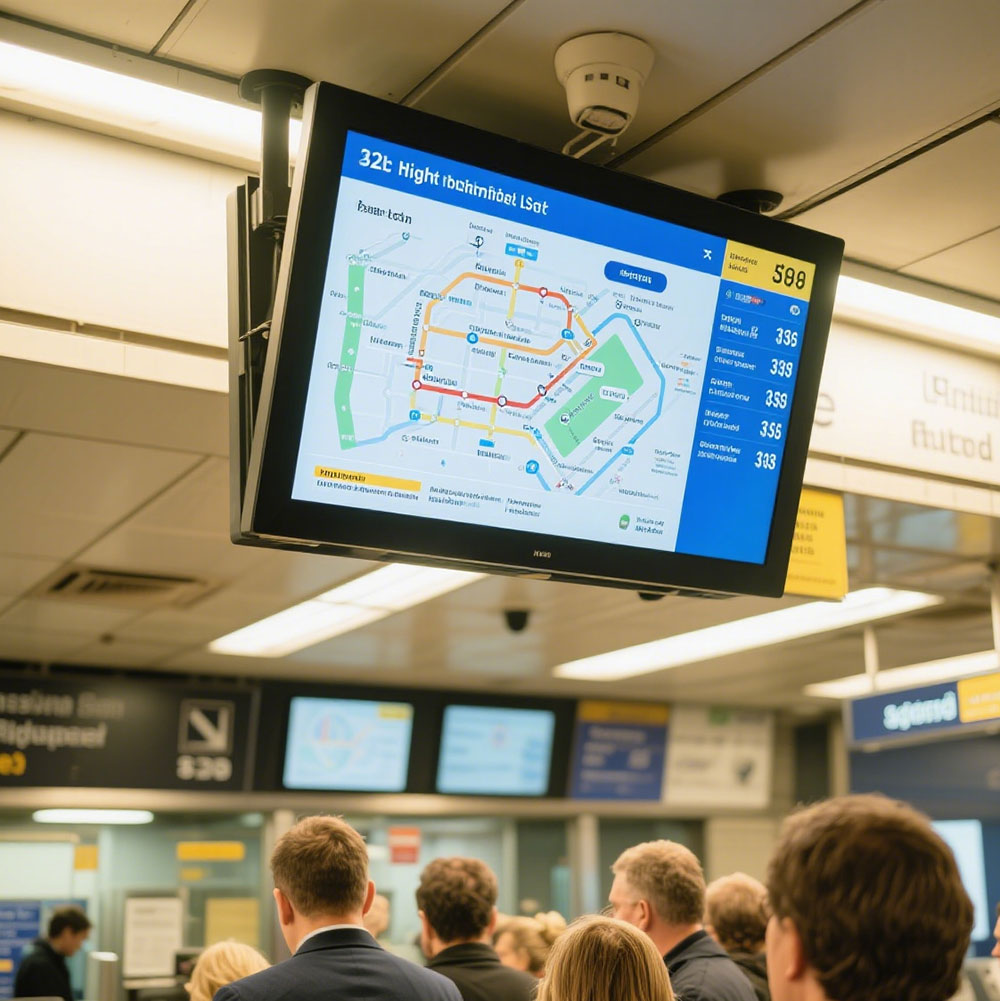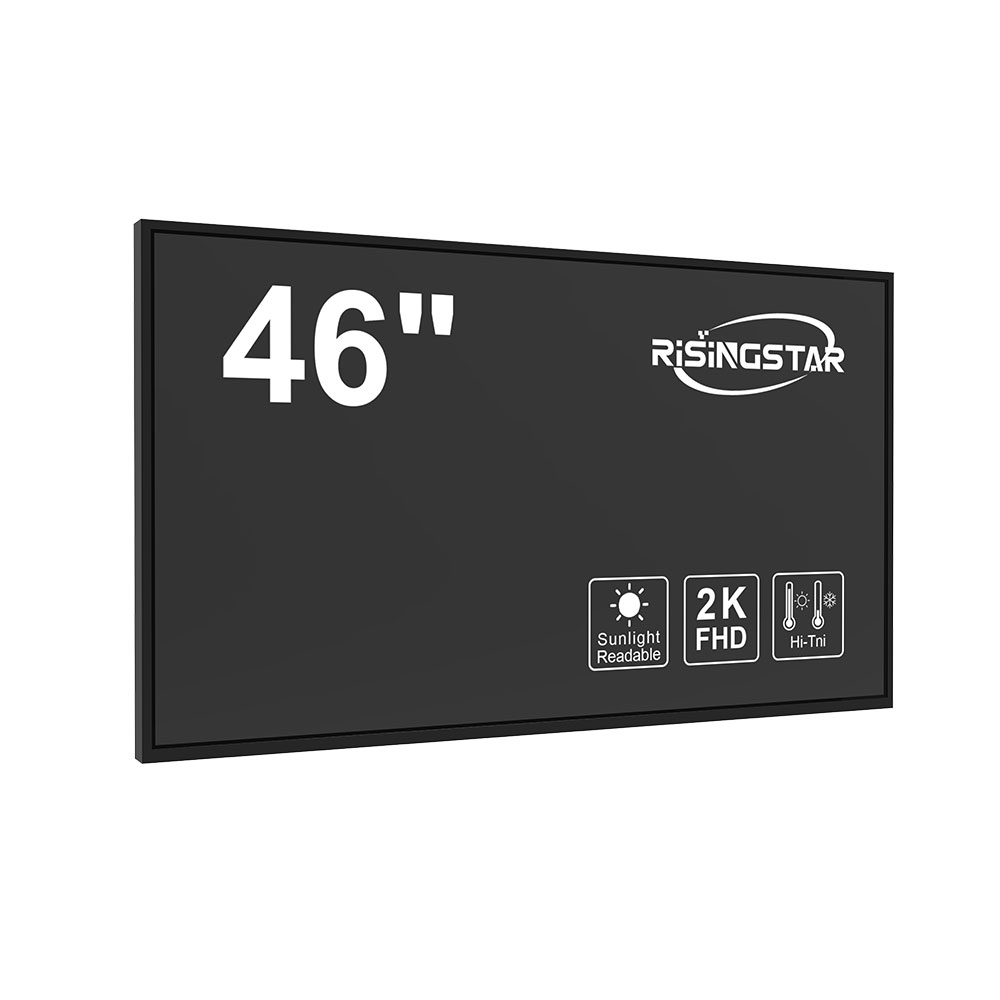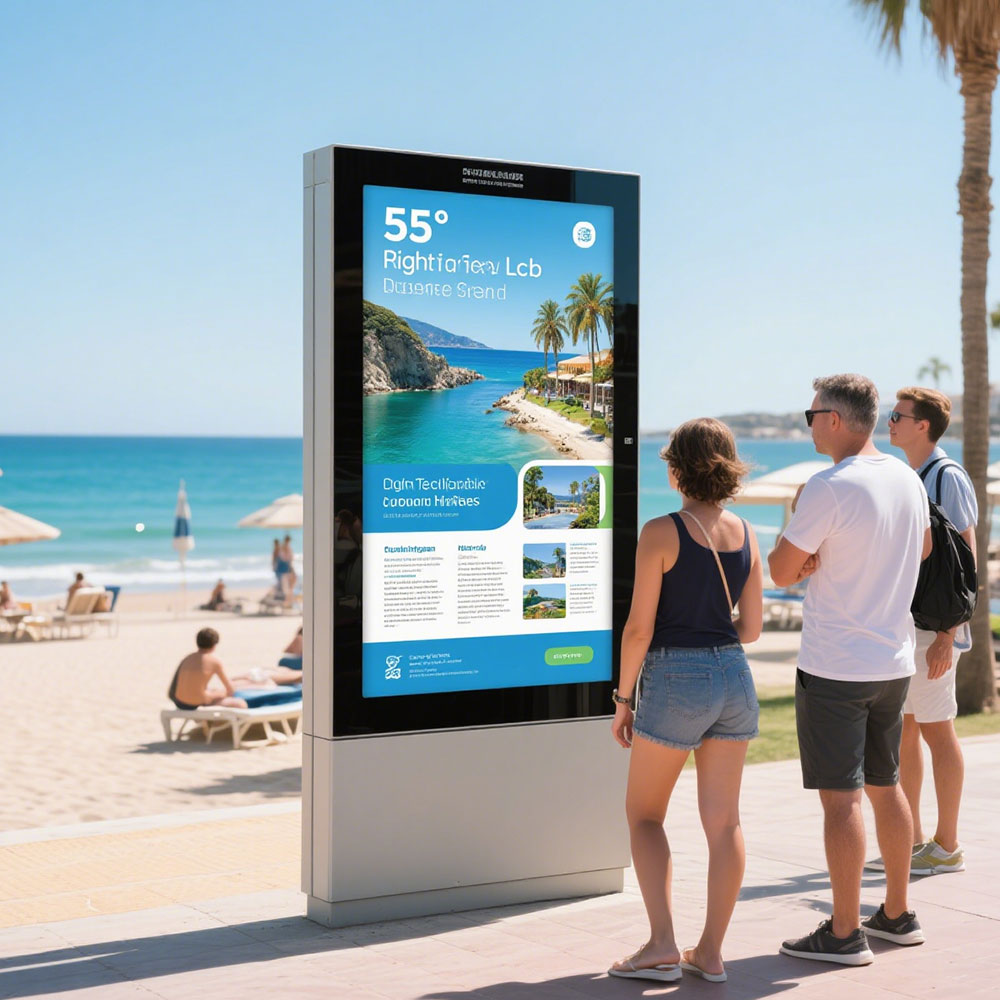Outdoor LCD screens are critical components in modern infrastructure, used in applications ranging from digital signage in public spaces to industrial monitoring systems. One of the most crucial specifications for ensuring long-term reliability and performance in these environments is the IP66 waterproof rating—a standard defined by the International Electrotechnical Commission (IEC) under IEC 60529. This rating ensures that a display is protected against dust ingress (6) and powerful water jets (6), making it ideal for deployment in high-humidity, rain-prone, or even coastal conditions.
To achieve an IP66 rating, manufacturers must follow rigorous design principles. First, the enclosure must be sealed using gaskets made from materials such as EPDM (Ethylene Propylene Diene Monomer) rubber or silicone, which maintain flexibility across wide temperature ranges (-40°C to +85°C). Second, all seams, cable entries, and mounting points must be designed with tight tolerances—typically less than 0.1mm—to prevent water penetration. Third, the internal electronics must be potted or coated with conformal coatings like acrylic, urethane, or epoxy to resist moisture damage and condensation.

Case studies from leading manufacturers, such as LG, Sharp, and Samsung, show that IP66-rated outdoor displays installed in Singapore’s tropical climate or Northern Europe’s rainy regions have demonstrated over 99% uptime over five years. These systems often incorporate additional features such as fanless cooling (to avoid air intake pathways) and anti-condensation heating elements. Testing protocols include spray tests at 100 liters per minute for 3 minutes from a distance of 3 meters—a benchmark required by IEC 60529 to validate the IP66 claim.

Importantly, achieving IP66 is not just about sealing; it requires holistic engineering. For example, improper cable gland installation can compromise the entire system—even if the housing is perfectly sealed. Engineers must also consider thermal expansion, vibration resistance, and UV degradation of materials. In one real-world failure case, a screen installed in Dubai failed within six months due to subpar gasket material that hardened under UV exposure, allowing dust and water ingress despite correct assembly.
For end-users, verifying IP66 certification through third-party laboratories like UL or TÜV is essential. It's not enough to rely on manufacturer claims—real-world testing under controlled conditions is what ensures trustworthiness. With proper design, quality control, and ongoing maintenance, IP66-rated outdoor LCD screens offer a robust solution for mission-critical applications where environmental resilience is non-negotiable.








